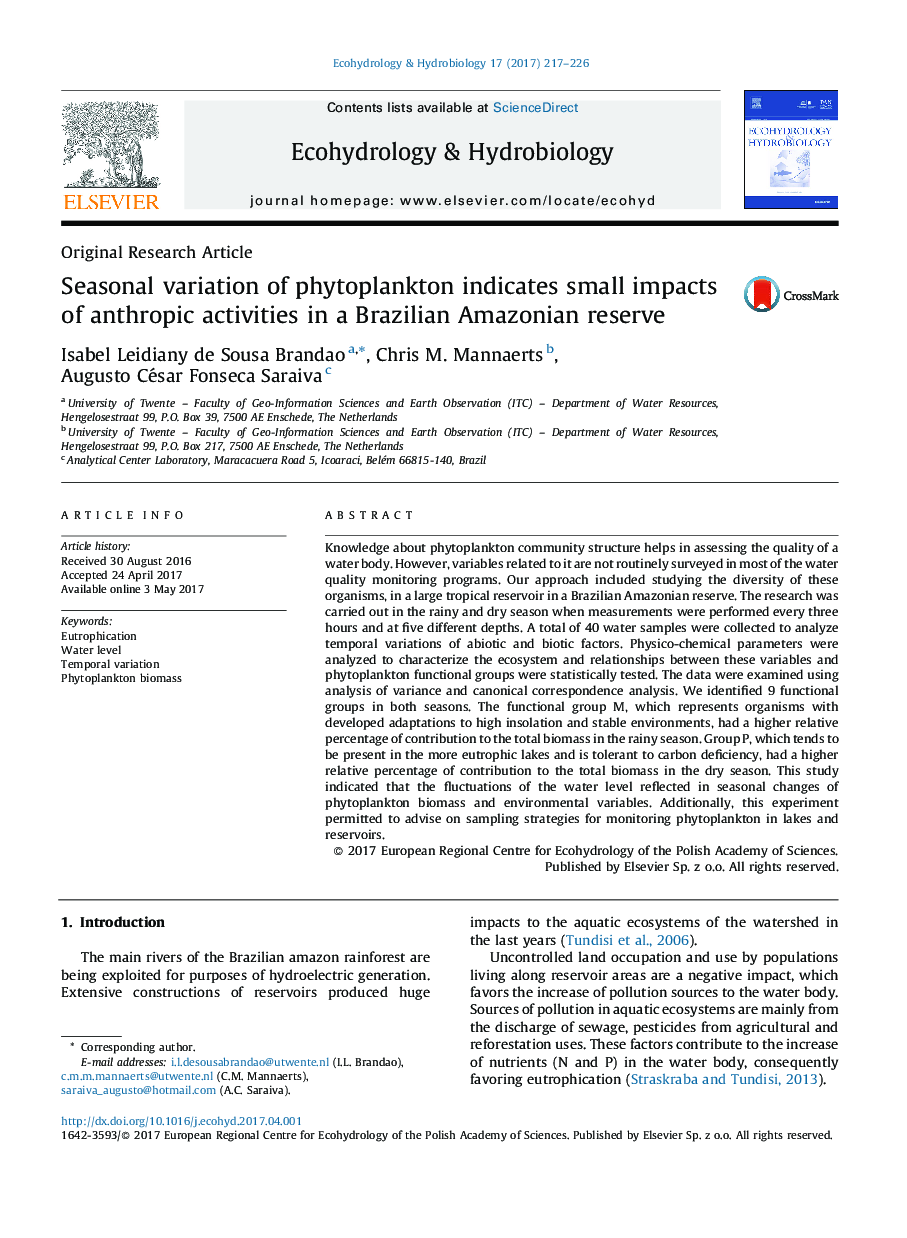| Article ID | Journal | Published Year | Pages | File Type |
|---|---|---|---|---|
| 5743456 | Ecohydrology & Hydrobiology | 2017 | 10 Pages |
Knowledge about phytoplankton community structure helps in assessing the quality of a water body. However, variables related to it are not routinely surveyed in most of the water quality monitoring programs. Our approach included studying the diversity of these organisms, in a large tropical reservoir in a Brazilian Amazonian reserve. The research was carried out in the rainy and dry season when measurements were performed every three hours and at five different depths. A total of 40 water samples were collected to analyze temporal variations of abiotic and biotic factors. Physico-chemical parameters were analyzed to characterize the ecosystem and relationships between these variables and phytoplankton functional groups were statistically tested. The data were examined using analysis of variance and canonical correspondence analysis. We identified 9 functional groups in both seasons. The functional group M, which represents organisms with developed adaptations to high insolation and stable environments, had a higher relative percentage of contribution to the total biomass in the rainy season. Group P, which tends to be present in the more eutrophic lakes and is tolerant to carbon deficiency, had a higher relative percentage of contribution to the total biomass in the dry season. This study indicated that the fluctuations of the water level reflected in seasonal changes of phytoplankton biomass and environmental variables. Additionally, this experiment permitted to advise on sampling strategies for monitoring phytoplankton in lakes and reservoirs.
